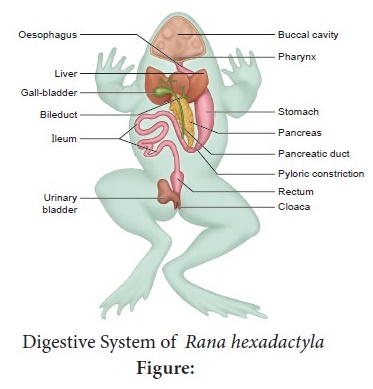Organ and Organ Systems in Animals | Zoology - Answer the following questions | 11th Zoology : Chapter 4 : Organ and Organ Systems in Animals
Chapter: 11th Zoology : Chapter 4 : Organ and Organ Systems in Animals
Answer the following questions
Zoology
Organ and Organ Systems in Animals
Evaluation
Answer the following questions
14. What characteristics are used to identify the earthworms?
1.
Light brown colour
2.
Purplish tingle colour at the anterior end.
3.
Body segments or metameres.
4.
14 -17 the clitellum
15. What are earthworm casts?
The
undigested particles along with soil are passed out through the anus as worm castings
or vermicasts.
16. How do earthworms breathe?
There
is no lungs and gills.
They
respire through body surface.
The
surface blood vessel helps in gaseous exchange.
17. Why do you call cockroach a pest?
The
cockroaches act as vector for the transmission of diseases like Cholera, Dysentery
Tuberculosis and Typhoid. Hence it is considered as a pest.
18. Comment on the functions of alary muscles?
The
triangular muscles that are present on both side of heart is responsible for blood
circulation.
19. Name the visual units of the compound eyes of cockroach.
•
The photo receptors of the cockroach consists of a pair of compound eye on the dorsal
surface of the head.
•
Each eye is formed of about 2000 simple eyes called the ommatidia.
20. How does the male frog attracts the female for mating?
•
The male frog has a pair of vocal sacs and copulatory or nuptial pad on the ventral
side of the first digit of each forelimb.
•
Vocal sacs produces croaking sound to attract female and nuptial pad is also helpful
in mating.
21. Write the types of respiration seen in frog.
•
Frog respires both on land and in water. In the water it respires through skin and
moist body surface.
•
When on land respires through buccal cavity skin and lungs.
22. Differentiate between peristomium and prostomium in earthworm.
Peristomium
The mouth is present in the centre of the first
segment of the body called peristomium
Prostomium
Overhanging the mouth is a small flap called the
upperlip or prostomium
23. Give the location of clitellum and spermathecal openings in Lampito mauritii.
•
Clitellum -14 -17 segment.
•
Spermatheca - There are three pairs of spermathecae lying in segments 6/7,7/8,8/9
24. Differentiate between tergum and a sternum.
Tergum
The
sclerites of dorsal side of cockroach
Sternum
The sclerites of ventral side of cockroach
25. Head of cockroach is called hypognathous. Why?
•
The head of cockroach is small triangular one.
•
It lies right angle to the longitudinal body axis.
•
The mouth parts are directed downwards so it is hypognathous.
26. What are the components of blood in frog?
1.
Plasma-60%
2.
Red blood cells, white blood cells platelets 40 %
27. Draw a neat labeled diagram of the digestives system of frog.

Oesophagus,
Stomach Liver, Pancreas, Duodenum, Intestine, Rectum, Urinary bladder, Cloaca
28. Explain the male reproductive system of frog
Male reproductive organ:
•
There are pair of testes. Each test is attached with kidney and dorsal body wall
with the peritoneal membrane mesorchium.
•
The vasa efferentia arises from each test is opened, into the bladder canal and
it communicates with the urinogenital duct that comes out of kidneys and opens into
the cloaca.

29. Explain the male reproductive system of frog
•
It consists of paired ovaries attached to the kidney and dorsal body wall by folds
of peritoneum called mesovarium.
•
Each oviduct opens into the body cavity at the anterior end by a funnel like opening
called ostia and posteriority the oviducts dilated to form ovisac before they open
into cloaca.
•
Fertilization is external.
•
The eggs hatch into tadpoles.
•
Tadpole develops three pairs of gills.
•
The tadpole grows into an air-breathing carnivorous adult frog through a process
meta morphosis.

30. Differentiate between Male and Female cockroach?

Q. List the characteristics features of Pigeon.
Q. Distinguish between vanes, barbs and barbules.
Q. Explain the reproductive system of frog
Q. Comment on the role of air sacs in increasing the respiratory efficiency in birds.
Related Topics